New Women’s History Walking Tour in Alexandria! (DOWNLOAD HERE!)
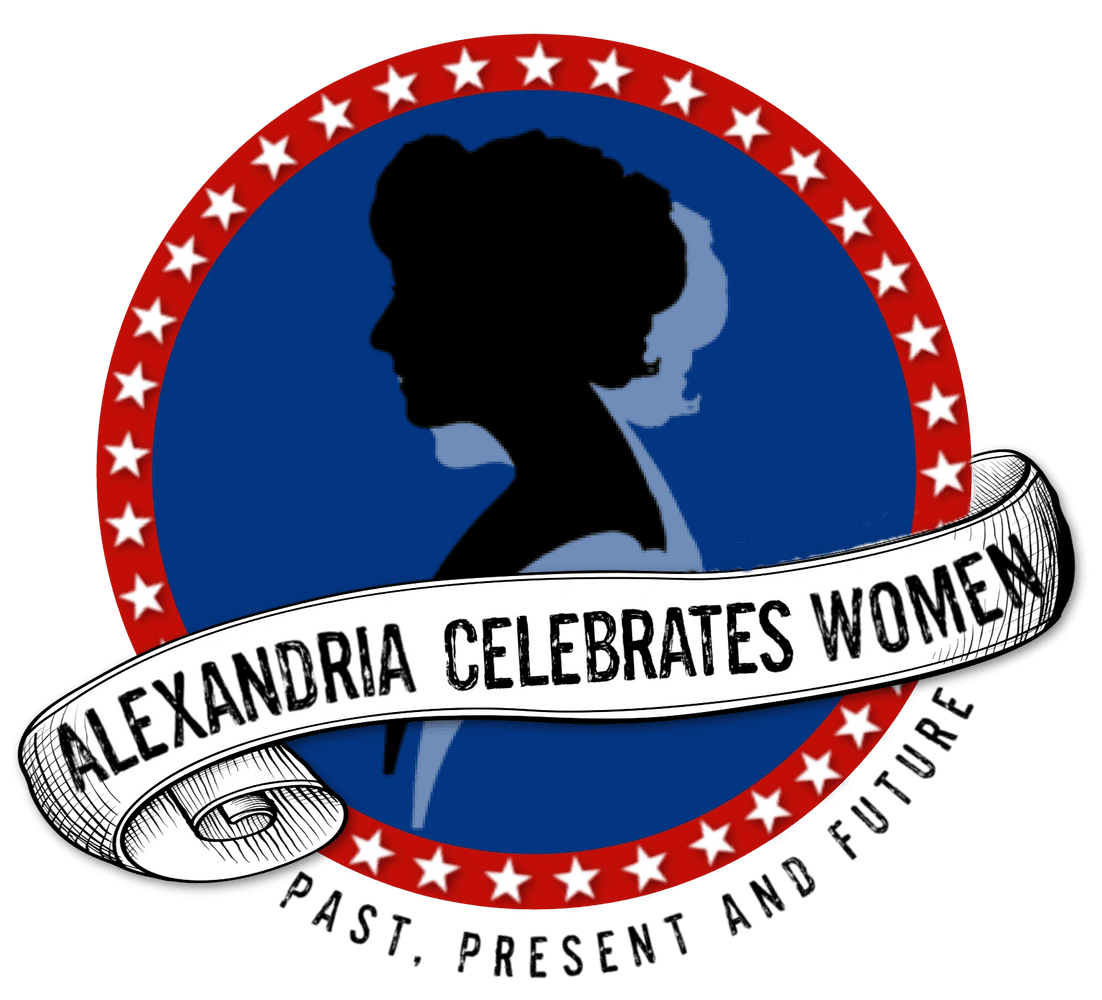 Alexandria, VA – The Alexandria Celebrates Women 2021 Women’s History Tour is a walking route through historic Old Town Alexandria, Virginia – a city founded 202 years ago, in 1749. The route will allow you to explore many of the sites associated with a wide array of diverse and courageous women who have been an integral part of Alexandria’s history. The tour is extensive – as is the City’s history – however the route is designed to be explored at your own pace: please feel free to stop/resume your tour at any time. Please allow at least two- hours for the complete three-mile Walk. This is an outdoor walking tour created to encourage you to enjoy the beauty and ambiance of Old Town at your own pace. Should you wish to enter any of the public sites, please check museum, library, City Hall and Torpedo Factory admission hours.
Alexandria, VA – The Alexandria Celebrates Women 2021 Women’s History Tour is a walking route through historic Old Town Alexandria, Virginia – a city founded 202 years ago, in 1749. The route will allow you to explore many of the sites associated with a wide array of diverse and courageous women who have been an integral part of Alexandria’s history. The tour is extensive – as is the City’s history – however the route is designed to be explored at your own pace: please feel free to stop/resume your tour at any time. Please allow at least two- hours for the complete three-mile Walk. This is an outdoor walking tour created to encourage you to enjoy the beauty and ambiance of Old Town at your own pace. Should you wish to enter any of the public sites, please check museum, library, City Hall and Torpedo Factory admission hours.
For everyone’s health and safety, please follow CDC COVID-19 guidelines.
The adventure begins at the Alexandria Visitor Center at 221 King Street and ends on the famed Alexandria Waterfront. Public parking and restrooms are located at City Hall, directly across from the tour starting point.
1. ALEXANDRIA VISITOR CENTER/RAMSAY HOUSE, 221 King Street
STARTING POINT: 221 King Street (Corner of King and Fairfax Streets)
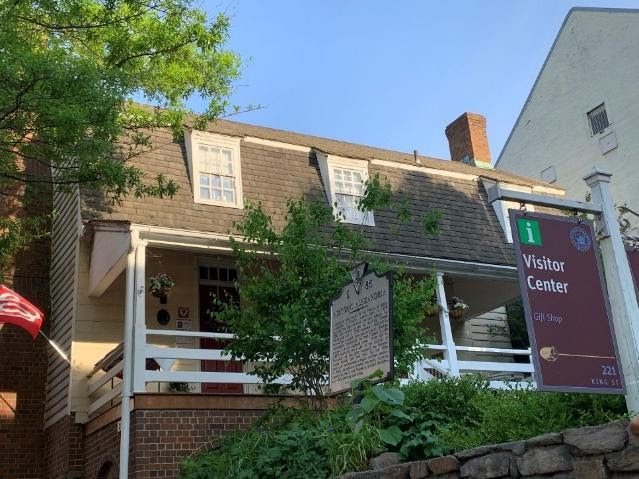
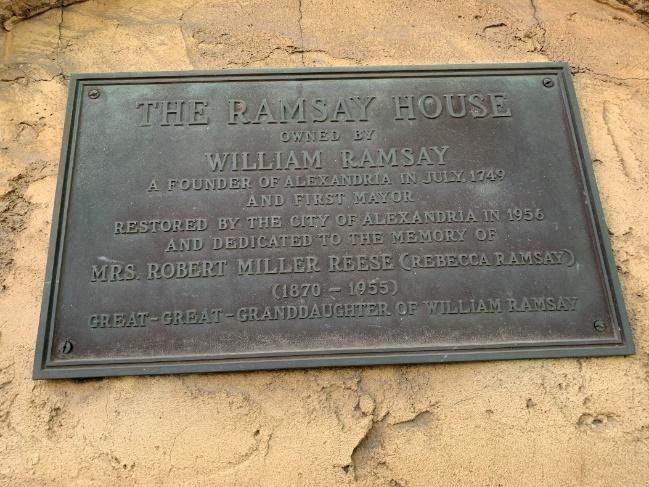
The Alexandria Visitor Center (221 King Street) operates from the historic William Ramsay House — the 18th century home of one of the City’s founders and his wife — an extraordinary woman.
William Ramsay emigrated from Dumfries, Scotland in the early 1700’s and originally settled in Dumfries, Virginia – a city approximately 25-miles south of Alexandria.
William was a merchant. To gain a more lucrative access to the thriving trade and seaport of Alexandria, William Ramsay purchased this lot and moved his family into this home and opened his store on the on the lower (street) of the house.
William married Ann Ball McCarthy (McCarty) – a relative of George Washington’s mother Mary Ball Washington. With rising talk of revolution in the Colonies, Ann realized that funds would be needed for the Continental Army. Ann became treasurer of Fairfax County and a philanthropist – raising more than $75,000 in 18th century currency. This alone proved to be quite a public accomplishment for a woman of her time, but Ann Ramsay emerged to become one of the most important fundraisers for the American Revolution.
William and Ann raised eight children here. Their son Dennis Ramsay became mayor of Alexandria.
In the early 1940’s, most of the Ramsay House was destroyed by fire. One wall survived and was used in the replica of the house you see today. The wall is located on what is now the veranda.
2. CARLYLE HOUSE HISTORIC PARK, 121 North Fairfax Street
DIRECTIONS: Walk one-half block North on Fairfax Street to 121 N. Fairfax St. Carlyle House will be on your right.
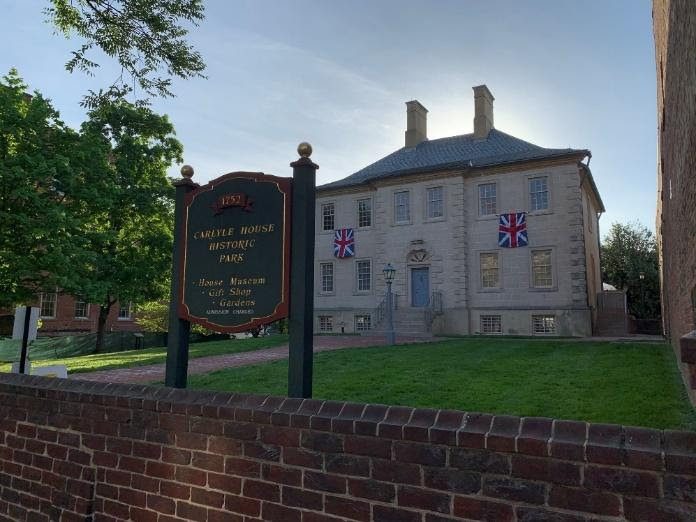 The Carlyle House Historic Park is located at 121 North Fairfax Street. This grand home reminds us of the precarious lives of most 18th century women –even those fortunate to live in a mansion of this scale.
The Carlyle House Historic Park is located at 121 North Fairfax Street. This grand home reminds us of the precarious lives of most 18th century women –even those fortunate to live in a mansion of this scale.
John Carlyle, another Scottish merchant and founder of Alexandria, completed this stone home on this site in 1753. Nineteen-year-old Sarah Fairfax married John Carlyle. Sarah became mistress of this home and gave birth to seven children — only two of whom survived to adulthood. Sarah died in childbirth at age 30. As was the custom of the time, John Carlyle soon married again. Sybil West and John had four children. Only three of whom survived. Sybil also died in childbirth in 1769.
Enslaved women worked in this home.
The house and grounds comprise Carlyle House Historic Park – part of the NOVA Parks regional park system. Today, Carlyle House is a museum and is considered one of the nation’s finest examples of Georgian residential architecture. During the American Civil War, the home was owned by the Green Family who built a large hotel in what is the front lawn of the home. The home and Mansion House Hotel were featured in the popular PBS miniseries “Mercy Street.” (Due to COVID-19 restrictions, please check current Museum operating hours before beginning your tour)
3. VOLA LAWSON LOBBY, ALEXANDRIA CITY HALL (Cameron Street Entrance)
DIRECTIONS: Walk one-tenth block to Southeast corner of N. Fairfax and Cameron Streets. Cross N. Fairfax ad walk to entry of City Hall (Door will be on your left).
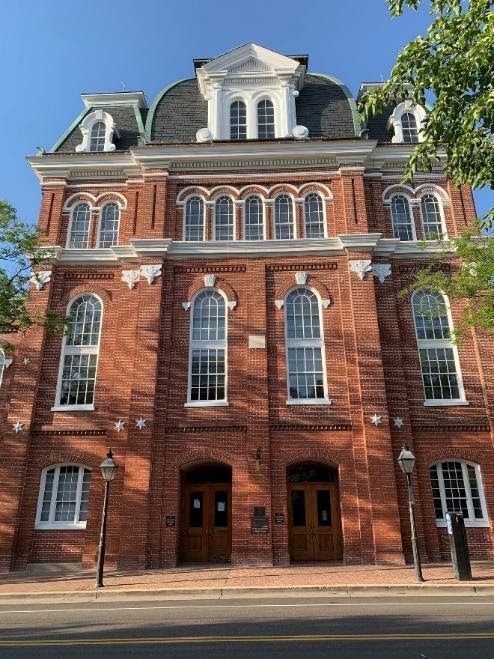
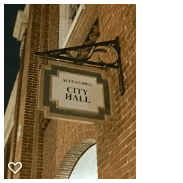 The Vola Lawson Lobby is featured at the Cameron Street entrance to the Alexandria City Hall at 301 King Street. This Lobby honors Alexandria’s first woman to serve as City Manager. Vola Lawson served as City Manager from1985 until 2001. Throughout her tenure, she developed the Office of Women and further empowered women by improving childcare, early childhood education, economic development, and housing. She was inducted into the Virginia Women’s Hall of Fame in 1993. Vola’s Dockside Grill on Alexandria’s Waterfront also recognizes her many accomplishments.
The Vola Lawson Lobby is featured at the Cameron Street entrance to the Alexandria City Hall at 301 King Street. This Lobby honors Alexandria’s first woman to serve as City Manager. Vola Lawson served as City Manager from1985 until 2001. Throughout her tenure, she developed the Office of Women and further empowered women by improving childcare, early childhood education, economic development, and housing. She was inducted into the Virginia Women’s Hall of Fame in 1993. Vola’s Dockside Grill on Alexandria’s Waterfront also recognizes her many accomplishments.
Joyce Woodson, Alexandria’s first African American woman City Council member, was elected in May 2000 and served two, three-year terms. Prior to serving on City Council, Joyce Woodson served as an Alexandria Redevelopment and Housing Authority commissioner, chairman of the board of Project Discovery and member of the executive boards of the Coalition for Fairness in Education, the Alexandria Chapter of the NAACP and as member of the Fair Housing Task Force.
The City’s first woman mayor also worked from this building. Patsy Ticer was elected in 1991. Following two terms as mayor, she became the first woman from Alexandria elected to the Virginia Senate, serving from 1996-2011. In her 15-years as a State Senator, Patsy Ticer championed health, social services and environmental concerns.
4. GADSBY’S TAVERN MUSEUM, 134 North Royal Street
DIRECTIONS: Walk one half block to Southwest corner of North Royal and Cameron Streets. Cross N. Royal St. to Gadsby’s Tavern Museum
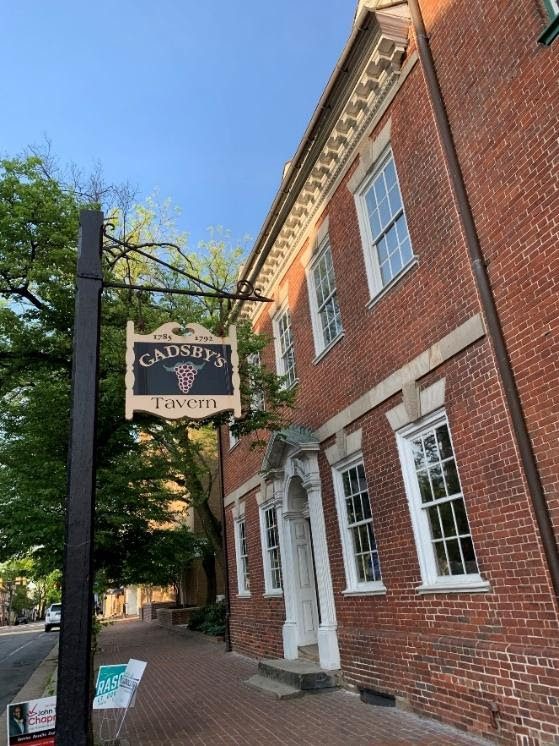
In the 1770s, tavernkeeper Mary Hawkins ran a tavern on this site – now thought to be on the location of today’s American Legion Post 24 building. Hawkins ran this tavern with the use of enslaved labor.
The two tavern buildings that stand on Royal Street today were constructed in 1785 and 1792 by tavern keeper John Wise. John Gadsby leased the buildings from Wise, operating the taverns as the most fashionable places in the Federal City (Washington, D.C.) area in their time.
The tavern served food and drink primarily to the upper classes (which in the 18th and early 19th centuries meant white men). When George Washington would travel the ten miles between Mont Vernon and Alexandria City, he sometimes would visit the tavern, as he noted in his diary for January 17, 1774. “Went up to Alexandria to Court…Suppd at Mrs. Hawkins and came home afterward.” Hawkins ran the tavern with the help of her daughter, sons, and several enslaved men and women.
John Gadsby later leased the property from then-owner John Wise. Gadsby turned the tavern and its adjoining building into one of the most fashionable places in the Washington, D.C. area and the buildings have retained Gadsby’s name. Gadsby’s Tavern Museum is open to the public.
(Due to COVID-19 restrictions, please check current Museum operating hours before beginning your tour)
5. MARKET SQUARE, 301 King Street
DIRECTIONS: Head South on North Royal Street to corner of N. Royal and King Streets, Cross N. Royal St. and enter Market Square.
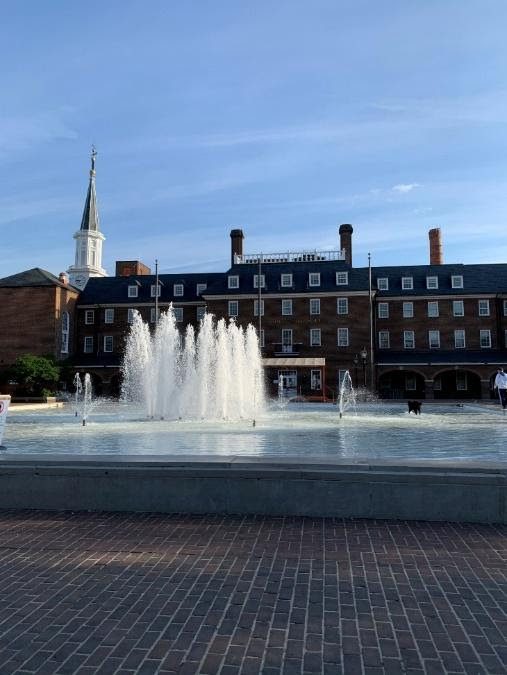 Market Square (301 King Street) is the home of the longest continually running farmer’s market in the United States. Never closing for weather, war or pandemics, the market operates here every Saturday morning. In the mid-1700’s, this Square was the same size as it is today and would have been filled with farmer’s carts and stalls – selling a variety of goods – sometimes even fresh fish from Mount Vernon (approximately 10 miles south).
Market Square (301 King Street) is the home of the longest continually running farmer’s market in the United States. Never closing for weather, war or pandemics, the market operates here every Saturday morning. In the mid-1700’s, this Square was the same size as it is today and would have been filled with farmer’s carts and stalls – selling a variety of goods – sometimes even fresh fish from Mount Vernon (approximately 10 miles south).
As it does today, Market Square also served as a meeting place. Although the majority of slave auctions were held elsewhere in the City, some were held at Market Square prior to the American Civil War. Enslaved individuals – including many women and girls — were sold. At one time, the public whipping post stood here as well. Alexandria’s first City Hall was built on the Square – and when it burned in 1871, City Hall was rebuilt on the same site.
6. ALEXANDRIA INFIRMARY, Southwest corner Duke and South Fairfax Streets
DIRECTIONS: Cross over King Street and walk south on South Fairfax Street for two and a half blocks to corner of Duke and S. Fairfax Streets.
The daughter of an Episcopal bishop who served as president of the College of William and Mary, Julia Johns was in her early 30’s when she moved to Alexandria in 1854. When a sailor arrived at Alexandria’s port with typhoid fever, fears of a potential epidemic prompted Julia Johns and an all-female board of trustees to establish the Alexandria Infirmary in 1872. Previously, the City had no designated location to house the ill, perform surgeries or to quarantine. A town house owned by Johns’s father at the corner of Duke and South Fairfax Streets became the site of the Infirmary in 1873.
In 1894, the Infirmary established the first nursing school in Northern Virginia, and in 1900 the Infirmary began the first outpatient care facility in the state. The Alexandria Infirmary later became the Alexandria Hospital. Following several location changes, it is today part of the INOVA Health System.
The building leased for the original Alexandria Infirmary was demolished in 1953. It stood where the small parking lot is located.
Julia Johns died in Alexandria in 1883. One of John’s obituaries read, “…To her noble efforts, even while sick and suffering, Alexandria owes the existence of the Infirmary, and many of the poor of our city speak her name with tender blessings.”
Johns’ Board of Lady Managers not only established the Infirmary, but it also managed the Hospital until 1941. Today, the group is active in fundraising for INOVA Alexandria Hospital.
7. KATE WALLER BARRETT HOME, 408 Duke Street
DIRECTIONS: Stay on Duke Street, heading west and walk two blocks to 408 Duke Street. Look for the free-standing, three-story yellow brick home on the south side of Duke St.
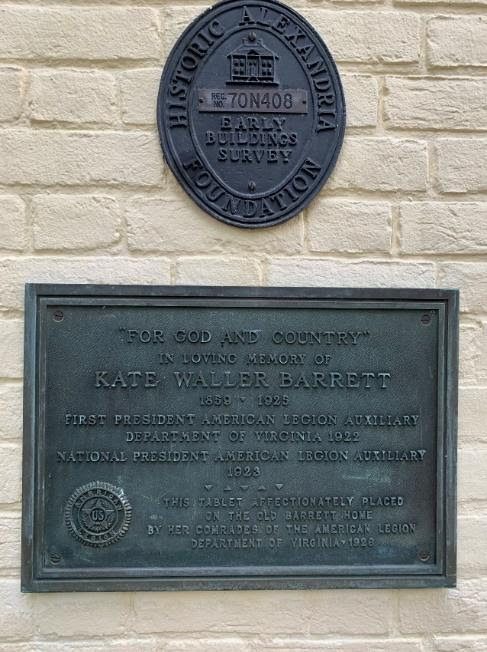
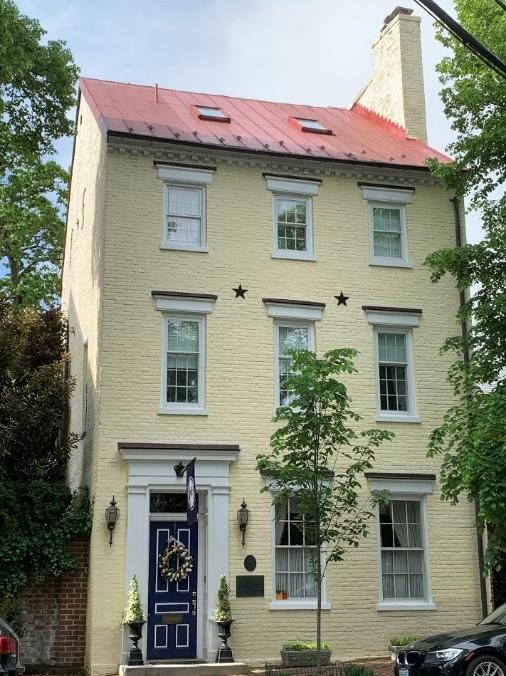
Alexandria and one famous occupant of this house played a part in the passage of the 19th Amendment – the Amendment to the United States Constitution that granted the right to vote to American women.
This 18th century home entertained a few famous inhabitants: The first, was Dr. Elisha C. Dick, who insured the home in 1796. Dick’s notoriety stems from his role as one of three attending physicians at George Washington’s deathbed. At the moment the first President died, Dick stopped the mantel clock at Mount Vernon. Martha Washington later gave the clock to Dr. Dick.
Widowed at 39 in 1896, Alexandria suffragist Dr. Kate Waller Barrett and records indicate that she probably purchased this home in 1900, where she raised her six children. Barrett served as president of the National Council of Women, co-founder of the National Florence Crittenton Mission, supporter of Susan B. Anthony and National president of the American Legion Auxiliary. She served as Vice President of the Equal Suffrage League of Virginia (1909-1920) and was a charter member of the League of Women Voters. Barrett was a delegate to the Democratic National Convention in 1924, where her speech received a standing ovation.
Barrett died at her home in 1925. Upon her death, state and national flags were flown at half-staff – an honor bestowed to no other woman before her. After her death, the Winchester (Va.) Star wrote, “If women had had equal rights 20 years ago, Kate Waller Barrett would have been elected president of the United States.”
This home remained in her estate until 1969. It is currently a private residence.
8. SITE OF OLD CUSTOMS HOUSE/COURT HOUSE/WOMEN’S SUFFRAGE HISTORIC MARKER, 200 Block South Saint Asaph Street
DIRECTIONS: Head West on Duke Street and walk one block to South Saint Asaph St. Turn right (heading north) on S. Saint Asaph St. and walk one half block. Marker will be on the sidewalk on the left (west) side of S. Saint Asaph St.
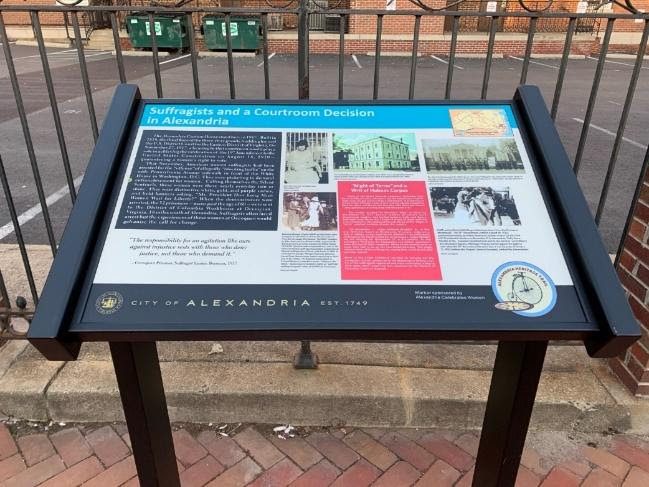
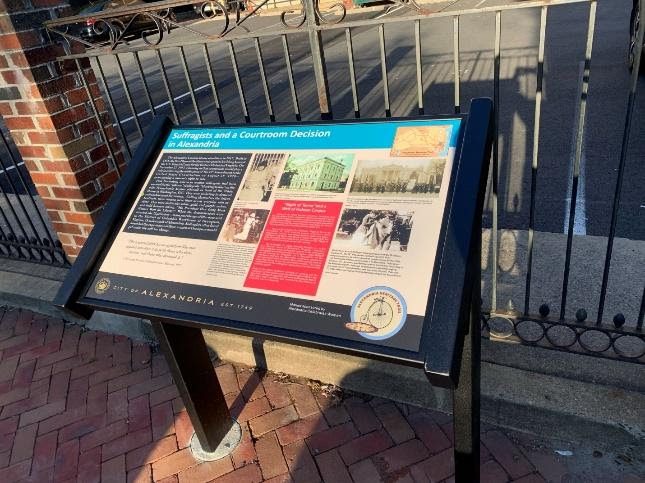
The historic marker on this site recognizes the fight for the American woman’s vote and Alexandria’s role in an important event related to women’s suffrage. Here, the Old Customs House stood – containing a Customs Office, a United States Post Office — and on the third floor, a federal courtroom – the U.S. District Court for the Eastern District of Virginia (1871-1930).
In November 1917, 32 suffragist prisoners (many past the age of 60) were arrested in Washington, D.C. and sent to the District of Columbia workhouse at Occoquan, Virginia, 18 miles south of Alexandria.
While held at the Occoquan Workhouse, the women were subjected to undue hardships and torture, resulting in the infamous November 14, 1917 “Night of Terror.” A number of women prisoners were threatened, beaten and hurled against walls and floors. Some of the women were force fed during their stay at the infamous Workhouse.
Following weeks of mistreatment, the suffragists were brought here for a hearing. The judge declared that the Suffragists should not have been jailed at the Workhouse. The women’s convictions (for “blocking traffic” on the wide Pennsylvania Avenue sidewalk in the District of Columbia) were eventually tossed out by the Federal Courts.
9. HARRIET WILLIAMS SITE, 112-114 South Saint Asaph Street
DIRECTIONS: Turn around and walk one-half block north on St. Asaph St. to 112-114 S. St. Asaph.
An old one-story frame house that stood across the street from the Columbia Steam Fire Engine Company (present day Columbia Firehouse Restaurant)) was the rented home of enslaved servant Harriet Williams in 1850. According to historical records, Williams was enslaved to Samuel Lindsay, an insurance agent who lived three houses away and rented the house for her. It is believed that Harriet may have lived here with her daughter and grandchildren. Harriet was not the first African American to live in the house, nor was she the last.
In the late 1960’s, archaeologists uncovered the remains of a well in the area that was once the backyard on this site. Artifacts were numerous and preliminary analyses showed that they were deposited in the well between 1850 and 1860. The site contained a large number of ceramic and porcelain objects – many of which may be seen at Alexandria’s Archaeology Museum – a museum that has been directed by women archaeologists throughout its history. Artifacts from the Harriet Williams site are also on display at the Alexandria History Museum at the Lyceum and at the Alexandria Black History Museum. (Please note that due to the COVID-19 emergency, most City museums are on limited operating hours or are closed (Please check ahead of your museum visits for opening status.).
This was an important and exciting find. Indeed, it is rare for urban archaeologists to find contexts that relate exclusively to African Americans, since slaves or domestics usually lived in the same house as their owners. This feature thus became the first African American site to be excavated in Alexandria and provided archaeologists with the opportunity to study and learn more about their lifestyle in the 19th century.
10. CONTRABAND HOSPITAL AND SCHOOL, 321-323 South Washington Street
DIRECTIONS: Return to corner of Prince and South Saint Asaph Streets and walk west on Prince St. one block to South Washington St. Cross S. Washington St at the light and turn left (heading south) on S. Washington St. Walk one block and a half to 321-323 S. Washington.
Within these walls, two women — one enslaved, one white— helped to improve the outcomes for many of the City’s poor and sick. The hospital that was contained within these buildings also contained a small number of sick women for whom professional medical care and adequate bedding were slow to materialize.
During the American Civil War, Alexandria was used by the Army of the Potomac as a headquarters for the shipment of supplies and troops and as a protection post for the Nation’s Capital. The City’s strategic location also made it a hub for the care of the sick and wounded. In due course, the City became home to more than 30 hospitals – public and private buildings the Union commandeered following its occupation of Alexandria. By the end of the war, Alexandria hospital sites housed 6,500 beds.
During the War between the States, Alexandria also became home to a growing population of African American former enslaved persons. A great number of contrabands and freedmen arrived at the City gates fatigued or ill.
Harriet Jacobs, a former enslaved woman from North Carolina and author of Incidents in the Life of a Slave Girl (1861), and her daughter Louisa arrived in Alexandria in the early 1860’s to provide emergency health care and establish the Jacobs Free School for newly freed refugees.
Jacobs and Julia Wilbur, a relief worker from Rochester, New York who had come to Alexandria during the War, used part of this building to store clothes and other supplies for the contrabands.
Despite an 1863 order by the military governor, mandating that a portion of the building be used as a hospital for African American Union troops, months went by without recognition of the order. A great number of government medical supplies and bedding became stockpiled in this house. Few patients were admitted during this time and an estimated six ill women occupied the only beds. One woman alone had been brought in to help care for the women patients.
According to Wilber’s diaries, she formed negative opinions of the surgeon in charge: Dr. Bigelow “was authorized to fit up his hospital equal to the best military hospitals, and employ competent nurses, &c., and I never heard any good reason why it was not done.”
The United States Army Hospital for Contrabands, Alexandria, was also known as the Contraband Hospital, Bigelow’s Hospital, the Colored Hospital, and the Hospital at the corner of Washington and Wolfe Streets. Wilbur continued to complain about conditions and about Dr. Bigelow. In her diary she wrote (May 7, 1863): “…a loathsome place. Those poor women are dying from neglect. I can hardly be civil to Dr. B.”
Today, this building houses a private business.
More information regarding Harriet Jacobs and Julia Wilber can be found at the Contrabands and Freedmen Cemetery and Memorial in Alexandria.
11. LLOYD HOUSE, 220 North Washington Street
DIRECTIONS: Walk three blocks (heading north) on South Washington Street. Cross over King Street (becomes North Washington St.) and walk two blocks on N. Washington St. Lloyd House will be on your left at the corner of N. Washington and Queen Streets.
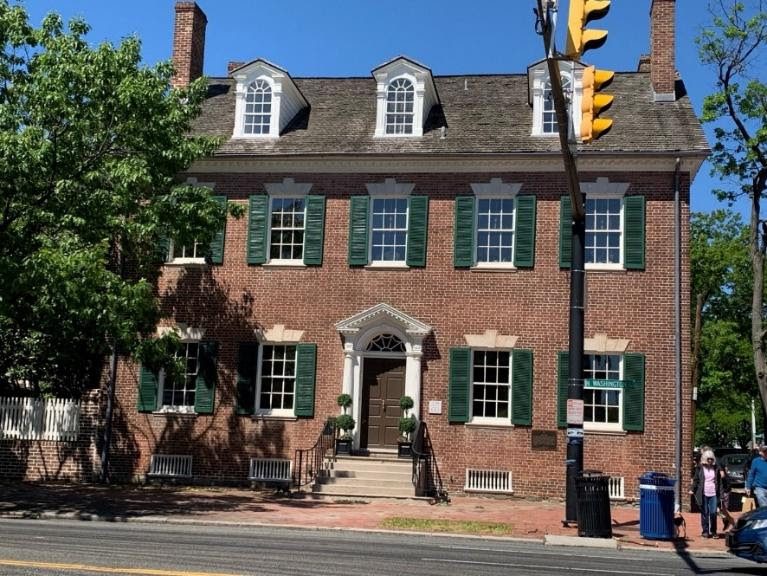 The Lloyd House on North Washington Street was once the home of famed suffragist leader Carolyn Hallowell Miller.
The Lloyd House on North Washington Street was once the home of famed suffragist leader Carolyn Hallowell Miller.
Virginia women, like other women nationally, fought for voting rights to implement more effectively the social changes they championed. They supported education reform, child labor laws, and the temperance movement. Concepts like racial equality or upward mobility for the poor, however, proved too radical for consideration.
In January 1883, Miller was introduced by Susan B. Anthony to address the National Women’s Suffrage Convention. The Alexandria Gazette, quoted a portion of Miller’s speech: “…I was born and reared in a town noted for its slave pens and intense conservatism, whose women inhabitants, if of social rank sufficient to be considered ladies, were treated with all respect…but yet (I) had also seen women of lower social classes there stripped to the waist and brutally beaten in public by order of the law, their only offense was impertinence to the young snipes of dry goods clerks whose own conduct provoked this impertinence.” Hallowell Miller also said of Susan B. Anthony and other leaders seeking women’s right to vote, “Coming generations would rise up and call them blessed… man would rise to a higher plane when he acknowledges equal rights for women before the law.”
Lloyd House today serves as the headquarters for the Office of Historic Alexandria. The gardens of Lloyd House are open to the public.
12. KATE WALLER BARRETT LIBRARY, 717 Queen Street
DIRECTIONS: At corner of Queen Street and North Washington Streets, cross Queen Street at the light. Walk one-half block west on Queen St. to the Library front entrance.
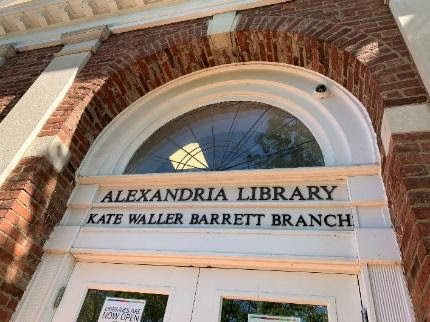
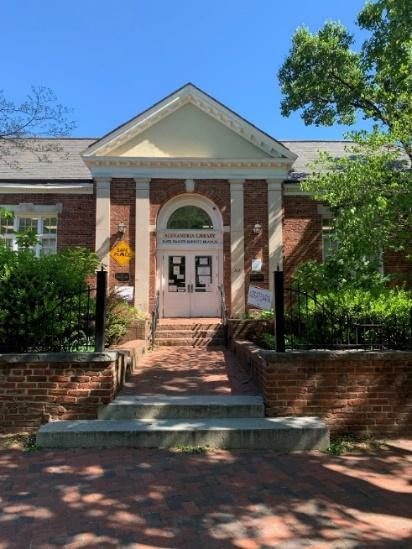
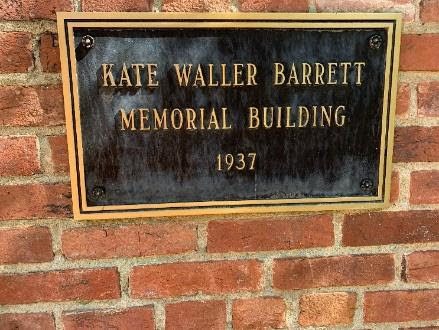
In 1937, the Alexandria Public Library on this site was named in honor of Kate Waller Barrett — an Alexandrian suffragist, social reformer, author and physician – in the days before women were considered equal at the ballot box.
A number of leading suffragists lived in Alexandria — women like Barrett who supported the suffrage movement. Barrett served as honorary vice president of the Equal Suffrage League of Virginia. She attended Susan B. Anthony’s funeral as one of Anthony’s supporters
Katherine Waller was born in 1857. She married clergyman Robert South Barrett, earned an M.D., degree, received an honorary Sc.D. degree and completed the nursing course at the Florence Nightingale Training School in London. She became superintendent and eventually president of the National Florence Crittenton Mission, a progressive organization comprised of 90 rescue houses across the nation. Established in 1883, the Mission assisted unmarried women and teenage girls, including girls and women of color, who either had children or were attempting to leave the prostitution profession. Barrett also published several books. Barrett was widowed in 1896 and raised her six children alone.
Barrett helped the city of Alexandria and nation by opening her home to wounded and ill returning U.S. troops during World War I and the 1918 flu pandemic. Although she turned down the honor, Barrett was asked to run for governor of the Commonwealth of Virginia.
Barrett died at her home in 1935. Upon her death, state and national flags were flown at half-staff – an honor bestowed to no other woman before her.
(Due to COVID-19 restrictions, please check current Library operating hours before beginning your tour)
13. FREE SCHOOL FOR GIRLS, 218 North Columbus Street
DIRECTIONS: Walk west on Queen Street one half block to North Columbus Street. Cross over N. Columbus and walk one block on west side of N. Columbus Street, look for the beige three-story building at 218 N. Columbus.
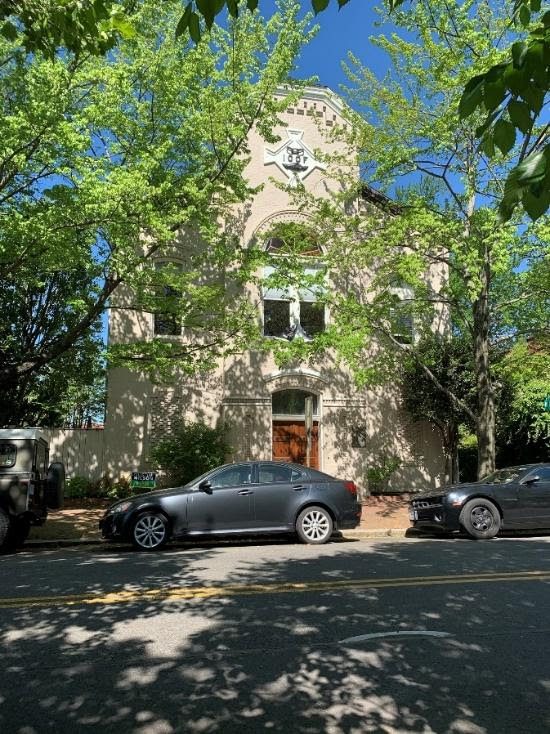
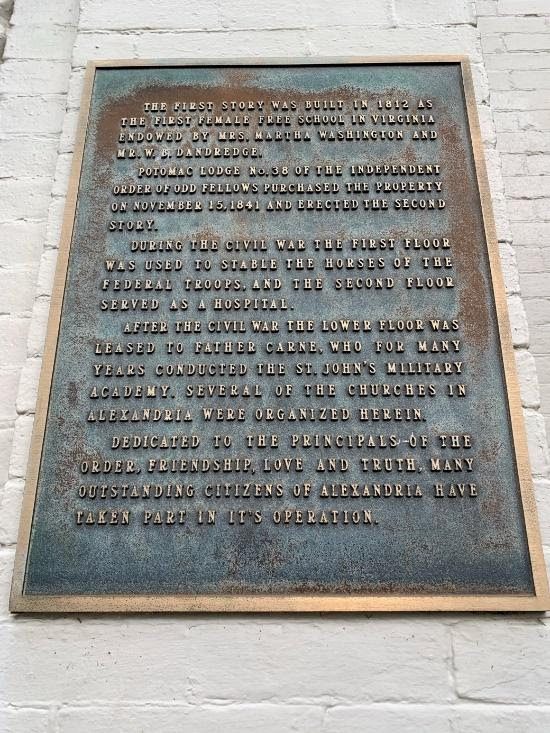 In 1812, the first floor of this building was the location of the Free School for Girls – the first female free school in Virginia. It was funded with monies from the Washington Society and Elizabeth Washington of Hayfield, Virginia, who dedicated her funds for girls only, saying, “I confine this donation to my own sex, because I believe that human happiness has material dependence upon our moral and religious worth.” The school ceased operations during the American Civil War when it became a stable and hospital.
In 1812, the first floor of this building was the location of the Free School for Girls – the first female free school in Virginia. It was funded with monies from the Washington Society and Elizabeth Washington of Hayfield, Virginia, who dedicated her funds for girls only, saying, “I confine this donation to my own sex, because I believe that human happiness has material dependence upon our moral and religious worth.” The school ceased operations during the American Civil War when it became a stable and hospital.
Before the building was constructed the land was owned by several people including 1600’s women’s rights advocate Margaret Brent. (Two historic markers regarding Brent are among the featured sites on the extended Alexandria Women’s History Tour)
14. ALEXANDRIA BLACK HISTORY MUSEUM, 902 Wythe Street
DIRECTIONS: Walk five and a half blocks on North Columbus Street to Wythe St. Turn left (heading west) on Wythe St. and walk one and a half blocks. Museum will be on your left.
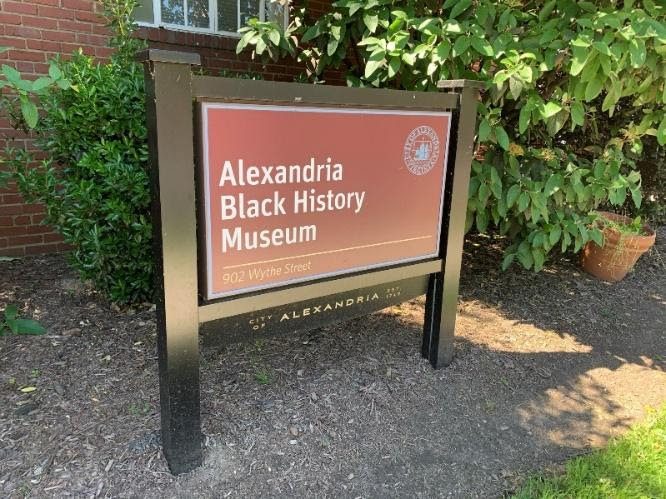
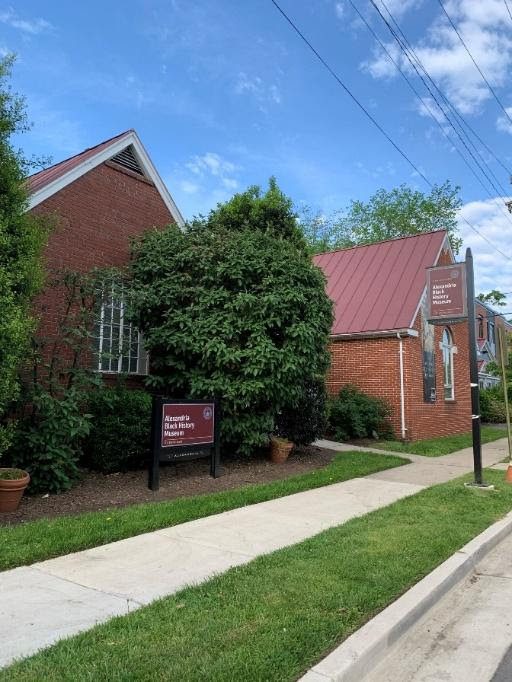
The Robinson Library, built in 1940 as the City’s first public library for African Americans, was the first 20th century building to occupy this site. Following desegregation in the 1960’s, the facility became more widely used and in 1983, with the vision and assistance of the daughter of a former enslaved person — Annie B. Rose of Alexandria — the site became the Black History Resource Center. Today, the Alexandria Black History Museum includes the Museum, the Watson Reading Room, and the Alexandria African American Heritage Park.
Director Audrey Davis, staff and volunteers provide information about the contributions of African Americans to the City’s history and culture (Due to COVID-19, the Museum is currently not open to the public. Please refer to the Museum’s Website for updates regarding reopening).
15. ALEXANDRIA AIRCRAFT CORPORATION, PORTNER BREWERY BUILDING, 600 Block North Saint Asaph Street (corner of N. St. Saint Asaph and Pendleton Streets)
DIRECTIONS: Walk east on Wythe Street for two and a half blocks. Cross over North Washington St. at light. Walk one block to North Saint Asaph Street. Cross over N. Saint Asaph St. and turn right onto N. Saint Asaph St. Walk one half block on N. Saint Asaph St. to view historic plaque on front of red brick building on your left.
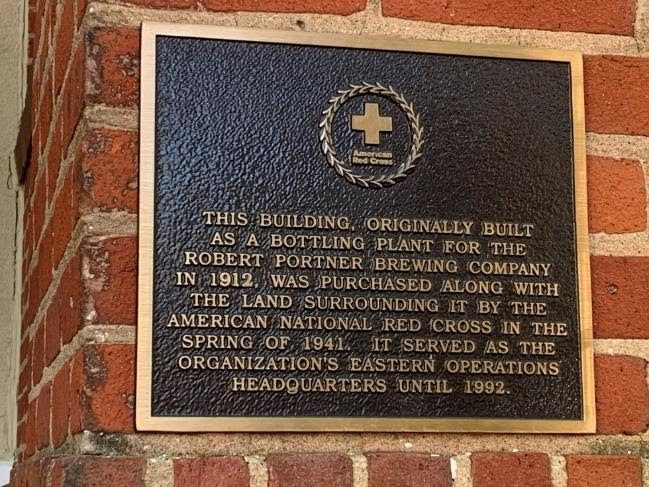
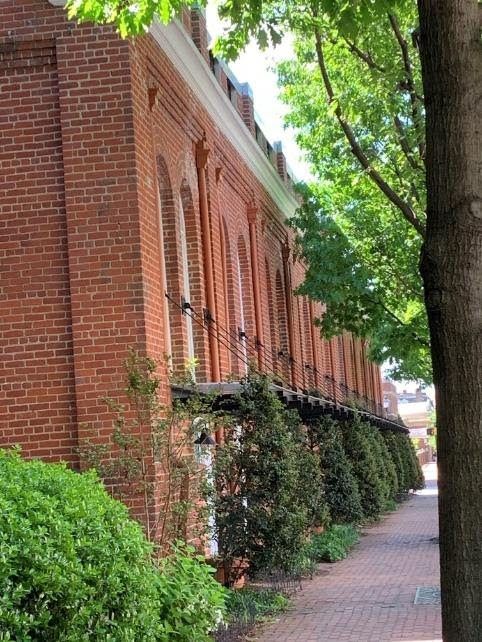
On this site, Alexandria women stepped up to work for the World War I effort – building airplanes. In October 1917, the Briggs Aeroplane Company announced it would begin production of airplanes and seaplanes in Alexandria. Formerly known as Kendrick Aeroplane, Briggs established its factory at St. Asaph and Pendleton streets, where the Portner Brewery once operated. The goal was to build aircraft for the U.S. Navy, including hydroplanes that would be tested along the Potomac River. The company constructed a hangar at Jones Point and employed about thirty workers at the factory seen in the 1918 photograph. On March 13, 1918, the first completed plane emerged from the factory and was moved down the streets to the hangar in anticipation of test flights. In 1918, the company changed its name to the Alexandria Aircraft Corporation. Less than a year after its first plane was completed, the company ceased operation.
16. ANNIE B. ROSE HOUSE, 309 Pendleton Street
DIRECTIONS: Continue on North Saint Asaph Street for the remainder of the block to intersection of N. Saint Asaph and Pendleton Streets. Turn left onto Pendleton St. and walk two and a half blocks on Pendleton St. to northeast corner of Pendleton and North Royal Streets.
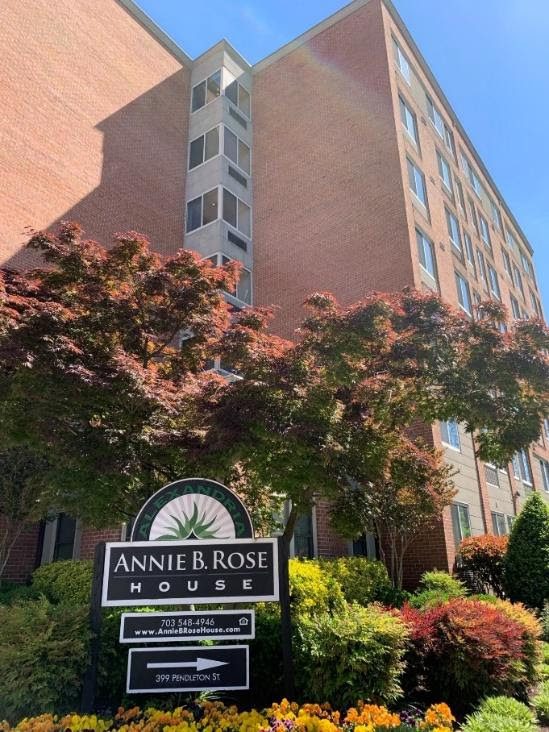
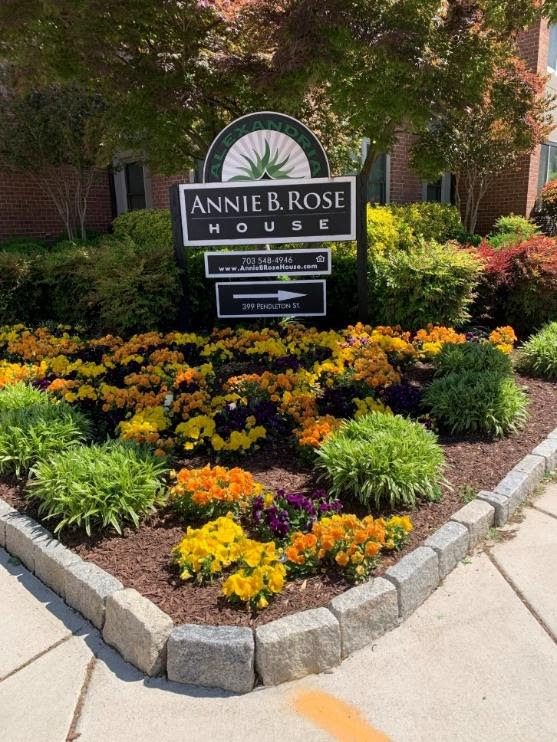
The daughter of a once-enslaved laborer, Annie B. Rose was born in Alexandria in 1893. Rose’s career become one of service. She taught school in the Alexandria vicinity and worked at the U.S. Bureau of Printing and Engraving. In the 1940s, Rose encouraged African Americans to register to vote. She helped establish the City’s first Commission on Aging and was a founding member of the Senior Citizens Employment Services of Alexandria. She was also one of the founders of the Society for the Preservation of Black Heritage. Rose helped to create the Black History Resource Center on North Alfred Street (now the Alexandria Black History Museum).
During her more than 40-years of service, Rose was honored for her efforts. This site – the Annie B. Rose House – is a one testament to her work – a modern private residence for aging, limited-income Alexandrians.
17. TORPEDO FACTORY ART CENTER/ALEXANDRIA ARCHAEOLOGY MUSEUM, 105 North Union Street
DIRECTIONS: Walk east on Pendleton Street for two and a half blocks (toward River). Pendleton St. becomes North Union St. as it curves to the right (near site of former Robinson North Terminal buildings). Stay on N. Union St. (heading south) for five and a half blocks. Torpedo Factory Arts Center will be on your left.
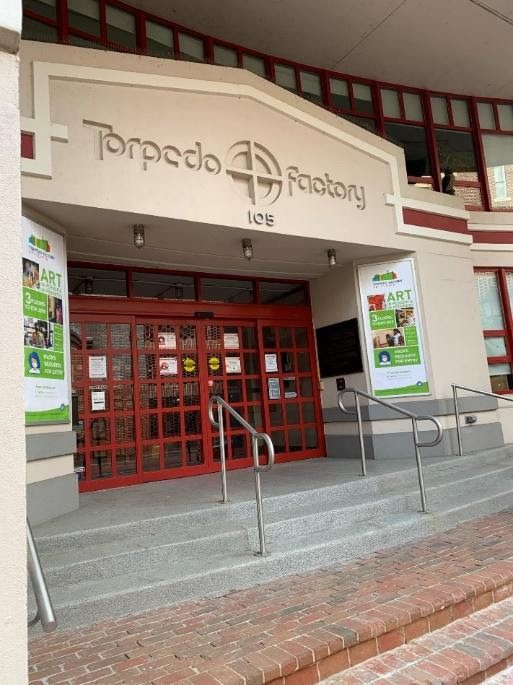
Due to the efforts of two women, this art deco style building – once a U.S. Naval Torpedo Station — stands today as a world-renowned arts hub and as one of Alexandria’s most famous landmarks.
Constructed during World War I, the munitions facility expanded to 16 buildings and 5,000 non-segregated employees. Production began following World War I and the Station manufactured Mark III and XIV torpedoes during World War II.
After WW II ended in 1945, the complex experienced additional lives as a manufacturing plant for parts for rocket engines and as a Federal Records Center (housing German war films, the Nuremberg War Crimes Trial records, U.S Congressional documents, and dinosaur bones).
The City of Alexandria bought the buildings from the Federal Government for $1.6 million in 1969.
Professional artists Marge Alderson and Marian Van Landingham spearheaded the 1973 campaign to convert the building into the Torpedo Factory Art Center.
Both Van Landingham (who served in the Virginia House of Delegates from 1982-2005) and Alderson have served as director of the Art Center.
Today, the Torpedo Factory Art Center is open to the public and is home to the nation’s largest collection of publicly accessible working-artist studios under one roof. More than 165 artists work, exhibit, and sell their art across three floors.
The Alexandria Archaeology Museum is housed on the third floor of the Torpedo Factory Art Center and is open to the public. Throughout its history, the Alexandria Office of Archaeology has been led women directors!
(Due to COVID-19 restrictions, please check current Torpedo Factory Art Center and Alexandria Archaeology operating hours before beginning your tour)
18. ALEXANDRIA WATERFRONT, end of King Street (Marina)
DIRECTIONS: Exit Torpedo Factory on Marina side and turn right. Vola’s Grill will be on your right on the Alexandria Waterfront.
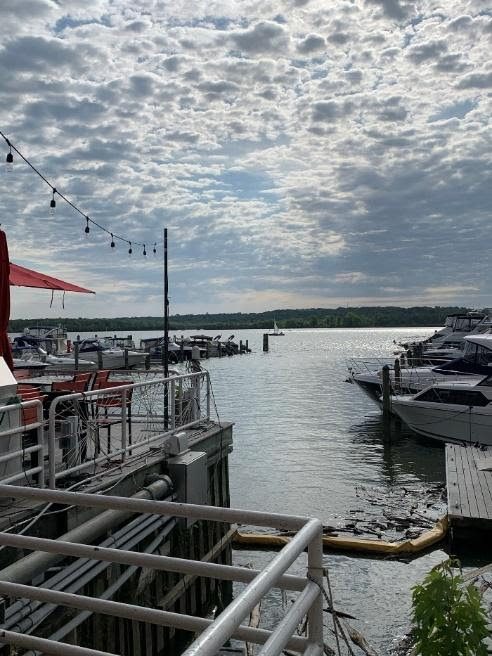
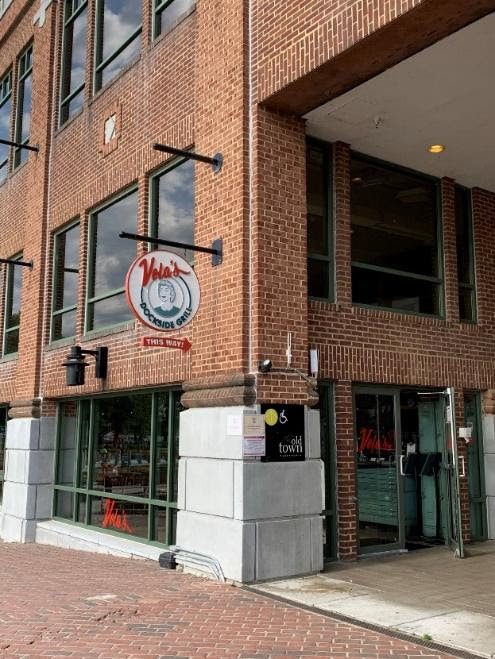
The Waterfront in Alexandria evolved due to the City’s location as the deepest and most northern natural port on the Potomac River. Once the seventh busiest port on the Eastern Seaboard, large seagoing ships brought silks, spices, wine and other goods to Alexandria in the 18th and early 19th centuries and left with cargoes of tobacco and wheat, among other exports., the City was also a base for the sale and transportation of enslaved individuals throughout the American South. A woman who worked for the civil rights of all Alexandrians was former City Manager Vola Lawson. Vola’s Dockside Grill is named after Lawson and contains historic photos and Vola’s cookbook (The lobby of Alexandria’s City Hall also ears Lawson’s name).
EXTENDED TOUR
There are nearby sites that are also important to women’s history in Alexandria. These sites are all within a short driving distance or could be added into your walking tour on an individual basis.
19. CONTRABANDS and FREEDMEN CEMETARY MEMORIAL, 1001 South Washington Street (corner of South Washington and Church Streets)
DIRECTIONS: South Washington and Church Streets, Alexandria
Along with the graves of many, three women are directly connected to this cemetery and memorial — a 19th century freed Black abolitionist, a Civil War-era Quaker social worker and a 21st century artist.
Rediscovered when the nearby Wilson Bridge was under construction, this site had been covered by a gasoline station. The cemetery served as the burial place for about 1,800 African Americans who fled to Union-occupied Alexandria between 1864 and 1869 to escape from bondage. Many arrived in Alexandria destitute, malnourished and ill.
Julia Wilbur, a Quaker, and Harriet Jacobs, a freed black, worked together to aid the newly freed African Americans. The two women combined their skills to seek medical treatment for the sick, obtain supplies and create education programs. A bronze plaque on this site reads, “Despite their best efforts, many particularly children, died from exposure or disease.”
In this century, when the Memorial was being designed, another woman was asked to help.
Bas-reliefs designed by the late artist Joanna Campbell Blake (Blake was also a central artist for The National WWII Memorial and a battle memorial from the War of 1812) honor the free African American women, men and children interred here.
The Contrabands and Freedmen Cemetery Memorial was listed on the National Register of Historic Places in 2012. The City of Alexandria officially dedicated the site in 2014. In 2015, the site was added to the National Underground Railroad Network to Freedom.
Stones mark the locations of 540 graves identified by archaeologists. The cemetery held nearly 1,200 additional graves (Look for the white bricks — marking the sites of additional graves — in the sidewalk and across South Washington Street, adjacent to the Cemetery). The last burial in Contrabands and Freedmen Cemetery took place in January 1869.
The names of identified burials are engraved in bronze and include at least two more females: Georgina Washington, named for George Washington, and Emma Skelton, who was six when she died July 9, 1864.
Harriet Jacobs worked with aid worker Julia Wilbur from 1863-1865 at the Contraband Hospital.
The hospital site (today housing a private business) was located at 321-323 South Washington Street.
20. MARGARET BRENT HISTORIC MARKERS, Jones Point Park
DIRECTIONS: (From Contrabands and Freedmen Cemetery) Travel north one block on South Washington Street to Green Street. Turn right on Green St. and go two blocks to Royal St. Turn right on Royal St. and look for entrance to Jones Point Park. The Margaret Brent historic markers are located in the trail near the Jones Point Lighthouse.
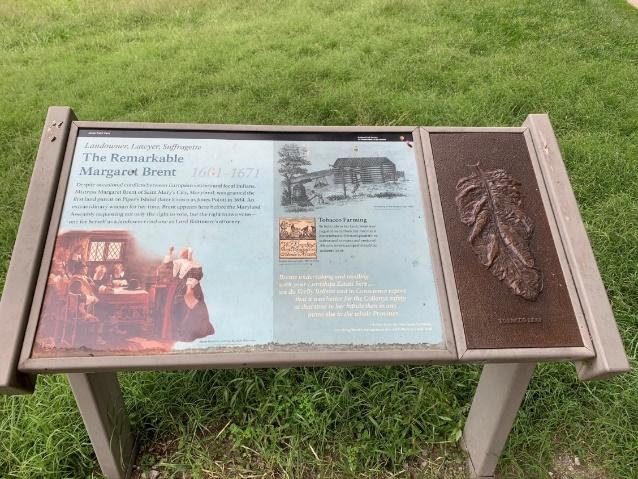
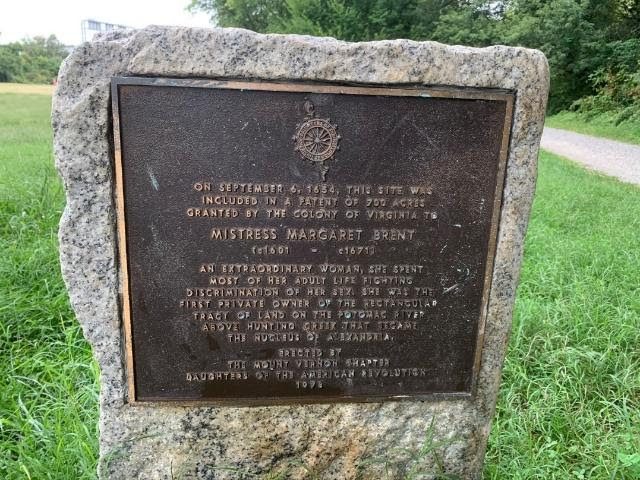
Margaret Brent, a woman with strong ties to the geographic region that would become Alexandria, asked for the right to vote almost 400 years before the 19th Amendment to the United States Constitution, which granted enfranchisement to women, was ratified in 1920.
In her native England – at a time when formal education for women was rare, Brent had been tutored in the law by her father. At age 37, Brent and three of her siblings emigrated to the newly chartered Roman Catholic colony of Maryland and arrived in its first colonial capitol, St. Mary’s City, on Nov. 22, 1638.
She often successfully represented herself and her brothers in court. She won the admiration of Maryland Governor Leonard Calvert, who died in 1647 after naming Brent as executrix of his estate. Brent claimed a land grant for 700 acres north of Great Hunting Creek, which included present day Jones Point and Alexandria.
A single woman, Brent was legally able to own her property and represent herself and others, but she could not vote in the Maryland Assembly. As the all-male Maryland Assembly met in St. Mary’s City on January 21, 1648, Brent made her way into the chamber and demanded the right to two votes and “voyce”– for herself as a landowner and for herself as the late Calvert’s chosen attorney. Brent was denied her votes.
Widely known and respected, Brent was appointed with Leonard Calvert as joint guardian for Mary Kittamaquund, daughter of the chief of the Piscataway Native American nation.
Although she owned 700 acres, upon which her enslaved laborers worked to grow tobacco for export from Alexandria’s seaport, Brent never lived in Alexandria.
21. WOMEN AND NATIVE POPULATIONS, Great Hunting Creek, Alexandria
DIRECTIONS: Walk to River behind Jones Point Lighthouse
Women and their families populated the Alexandria area as early as 13,000-years ago.
In 1608 as he was exploring the Potomac River, Captain John Smith described the location of a village on the south side of Great Hunting Creek. You are standing on the north shore. Although archaeologists have not unearthed the village of Assaomeck (“middle fishing place” in the Algonquian language of this region), they have recorded numerous Native American sites on both sides of Hunting Creek. Villages in the 17th century were situated near resources, like fresh water, good soil, access to marshlands and a large river system, and high ground. The hillslopes which rose on the south side of Hunting Creek would have been an ideal location, as opposed to the flatter north side (present day Alexandria City).
While men in the tribe typically fished and hunted, women cared for children, cooked, grew and gathered food, made clothing and carried their homes as the tribe migrated. The leader of the Algonquin tribe is called a chief or Ogima – usually a man chosen by the tribe’s leaders. Today the Ogima can be a man or a woman.
Historical documents suggest Native populations remained in this area until approximately 1675.
22. EDMONSON PLAZA, 1701 Duke Street
DIRECTIONS: (From Jones Point Park) Travel north seven blocks on Royal Street to Duke Street. Turn left onto Duke St. and travel 13 blocks. Edmonson Plaza and Edmonson Sisters sculpture will be on your left.
Sisters Emily Edmonson (1835 – 1895) and Mary Edmonson (1832 – 1853) were enslaved African Americans who, on April 14, 1848, were part of a daring attempt for freedom. Along with seventy-five other enslaved persons, Emily, age 13 and Mary, age 15 boarded the schooner The Pearl in Washington, D.C. The craft was discovered under sail on the Potomac River. The sisters were captured and taken to this site — the Bruin Slave Jail in Alexandria.
While their father tried to raise money to buy their freedom, they remained under the control of slave trader Joseph Bruin. The sisters were sent to New Orleans to work as “fancy girls” (sex workers), but due to a disease outbreak in Louisiana, the sisters were brought back to Bruin Jail in Alexandria where they labored as laundresses.
Their father eventually contacted abolitionist, Dr. Henry Ward Beecher (brother of author Harriet Beecher Stowe Uncle Tom’s Cabin). Beecher bought the girl’s freedom November 4, 1848. The young women moved north and attended college. Mary died at an early age of tuberculosis. Throughout her life, Emily Edmonson remained a public advocate for civil rights.
Edmonson Plaza was dedicated June 25, 2010, on the former site of the Bruin Slave Jail. Sculptor Erik Blome created the 10-foot-high bronze statue. The Plaza is open to the public.
Photography – Gayle Converse
Alexandria Celebrates Women (ACW) recognizes the accomplishments and contributions of Alexandria, Virginia’s women of the past, present and future. The volunteer 501(c)(3) charitable non-profit organization acknowledges the distinguished history of Alexandria’s heroines while celebrating the empowerment of Alexandria’s modern woman. https://alexandriacelebrateswomen.com/
MORE: Good Friends, Yummy Food, and a Great Deal at Sonoma Cellar on King Street!



[…] Credit: Source link […]